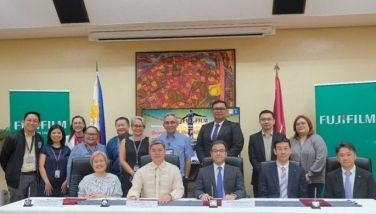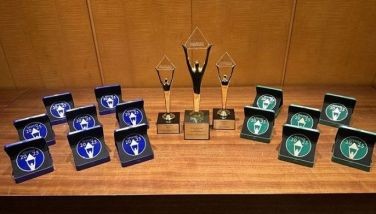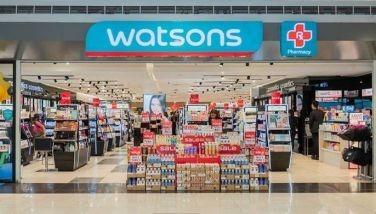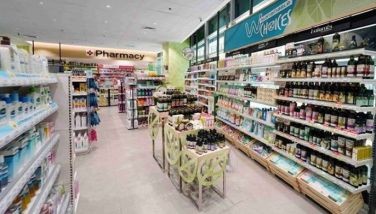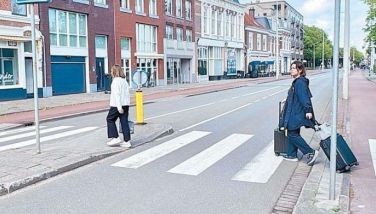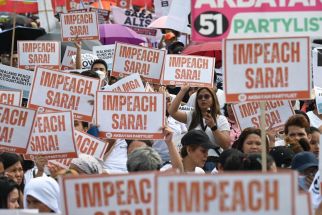Water security

Thanks to heavy rainfall in the past days, water supply rotation in wide areas of Metro Manila has been lifted, and water for irrigation need not be curtailed.
Heavier rains ahead are likely due to the start of El Niño, which tends to trigger extremes of whatever is the prevailing weather condition. This means no more water rotation during the rainy season, but it could resume during the dry season when drought is possible.
One measure of the level of development in a country is the safety of tap water. In advanced economies, you can drink water directly from the tap. If you ask for bottled water, you will be given something fancy like Perrier.
Until my college years, people could still drink water directly from the taps of what we now know as Metro Manila. Even in Parañaque, where water during those days had a distinct taste because it came from deep wells, I never got sick from drinking water directly from my relatives’ home taps.
When bottled water was introduced in Metro Manila, many people asked, who would pay for drinking water?
And yet as water pipes deteriorated and the capital region’s population surged, with no corresponding expansion in potable water capacity, the safety of tap water became compromised, and bottled water enterprises boomed.
The piped water network of what was called the NAWASA – the National Waterworks and Sewerage System Authority – also did not reach many areas of the capital.
In the property development “projects” south of Manila, people relied mainly on ground water extracted through industrial-grade pumps provided by the subdivision developer, or on household pumps connected to storage tanks.
My house still has water pumps and a massive tank that can store up to three days’ worth of the household’s regular water needs. This was because we used to get only a few hours of water supply, sometimes only every other day.
* * *
The service under NAWASA’s successor the Metropolitan Waterworks and Sewerage System was so awful that privatization was gladly welcomed by people desperate for improvement. A study conducted by the Asian Development Bank showed that the heavily indebted MWSS serviced only 60 percent of its coverage area, with less than half having 24-hour water service.
After the privatization deal was finalized in what at the time was touted as the deal of the century, I got to tour the water treatment facilities outside Paris of the French partners of Benpres Holdings Corp., Suez Environment and Lyonnaise Asia Water Pte Ltd. Benpres’ Maynilad had won the concession for the west service sector.
I was told that the Suez group handled water distribution at the time in Paris, where water from the tap is safe to drink anywhere. Seeing how wastewater was transformed into sparkling potable water in that French treatment plant, I happily anticipated an end to Manila’s water woes.
Disappointingly, it took forever for the west zone concessionaire to reach my neck of the woods. Apart from corporate issues, the west sector reportedly needed more extensive work to install new pipes, which required right-of-way agreements plus talks with local water service providers and homeowners’ associations.
* * *
The Benpres group eventually threw in the towel and Maynilad was taken over by the partnership of DM Consunji Holdings Inc. and Metro Pacific Investments Corp. I don’t know what miracle happened, but in no time, the pipes were laid in our village and for the first time since leaving the city of Manila, I could again enjoy piped water around the clock at home.
Even Maynilad and east zone concessionaire Manila Water, however, have their requirements for providing optimum service. Under the privatization deal, the government was supposed to be in charge of providing the water sources – including developing new ones – for distribution by the concessionaires.
I don’t remember any significant new water source coming onstream since then. Kaliwa Dam is bogged down in all sorts of controversies that no administration can seem to resolve with a win-win outcome, to borrow a favorite Chinese phrase.
The Chinese come to mind because the world knows how they deal with opposition to the construction of dams and other critical public infrastructure projects – which is to proceed as if the opposition is non-existent, and woe to anyone who believes otherwise.
This, of course, is not possible in our exuberant democracy. But such decisive moves by the state are part of the appeal of China (and Vietnam) for investors. Money doesn’t like uncertainty and indecision. Even in our country, I know a number of titans in business and industry who believe we could use a firmer hand and a bit less democracy.
* * *
We can’t even stop the unending reclamation activities and construction of fishpens owned mostly by political families in Laguna de Bay, which have caused heavy siltation and massive flooding in what was originally a floodplain around the lake.
The siltation and use of the lake for aquaculture have limited the possibilities of tapping Laguna de Bay as a freshwater source for Metro Manila and neighboring areas. Manila Water taps the lake for augmentation.
Some experts have said our archipelago is blessed with abundant sources of fresh water. What’s lacking, they say, is efficient water management.
Those who see Kaliwa Dam and other new water sources as a lost cause are looking instead at industrial-scale or community-level rainwater harvesting and wastewater recycling as options.
“Graywater” for recycling is not supposed to include wastewater from toilets and kitchens. I don’t know how these can be segregated from wastewater from the laundry and garden; I thought everything ended up in the same septic tank.
Also, wastewater recycling is of course more expensive, and could require treatment agents whose effects on drinking water and human health need deeper study.
But with water sources unable to keep pace with population growth, we have to be open to other options.
As for harvesting rainwater, this was popular in the country before the arrival of piped water networks. There are still old houses with concrete cisterns where water for doing laundry, gardening and cleaning driveways was stored. The water just needs proper containment to prevent it from turning into a breeding ground for mosquitoes.
I wonder if we will ever be water secure in my lifetime. And if I will ever again enjoy drinking water direct from the tap in Metro Manila without worrying about developing gastroenteritis, amoebiasis or, worse, cholera.
- Latest
- Trending










